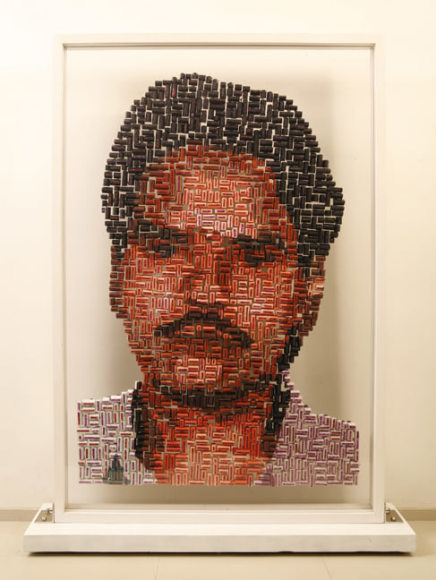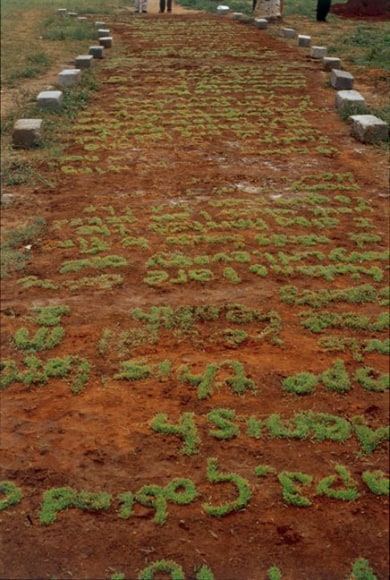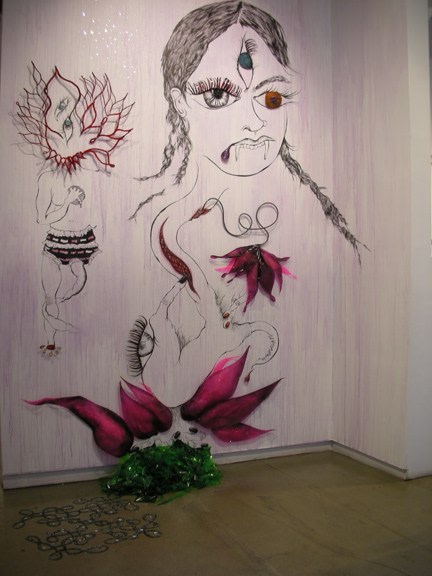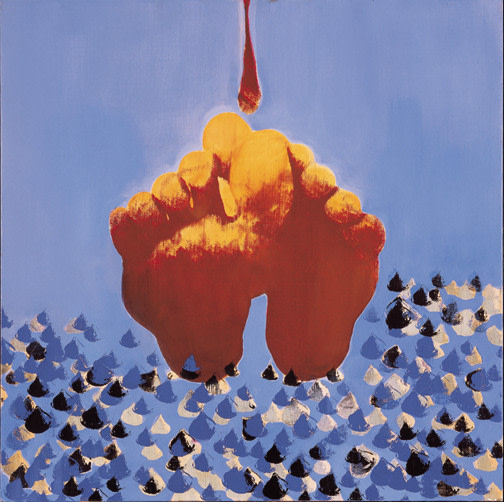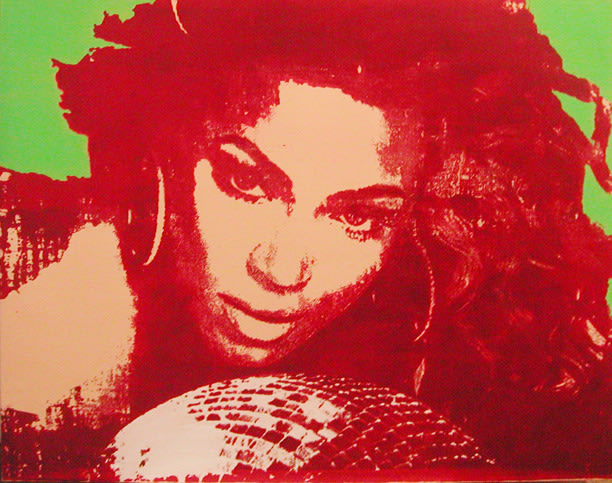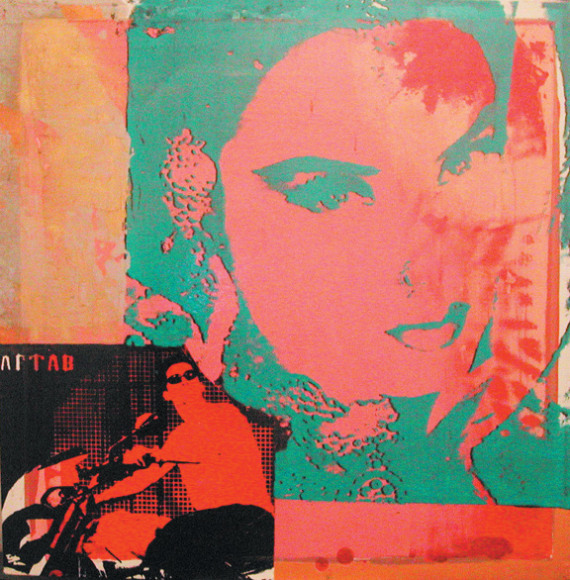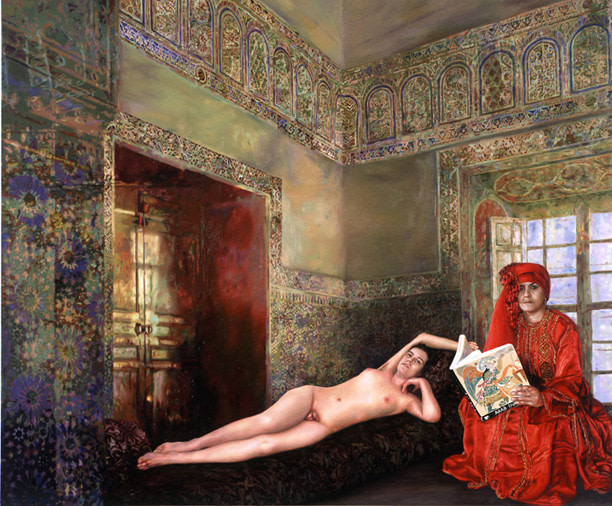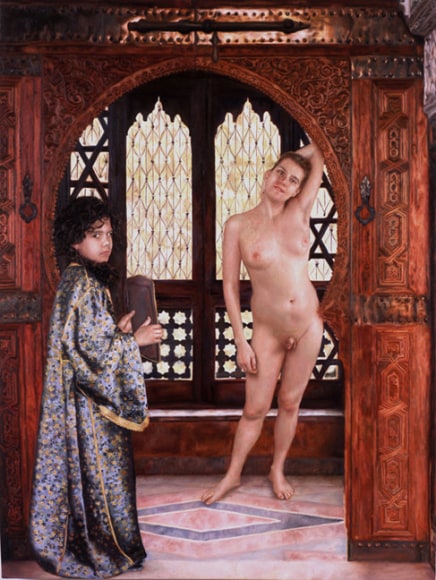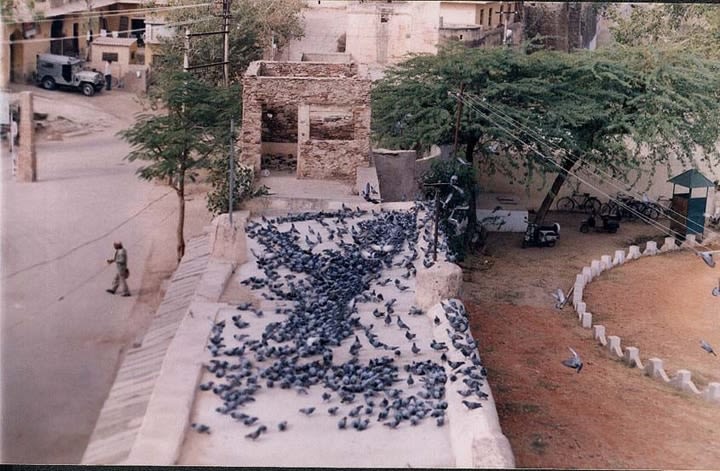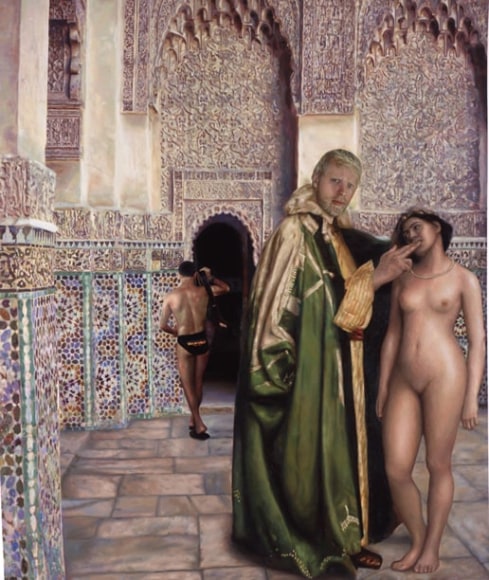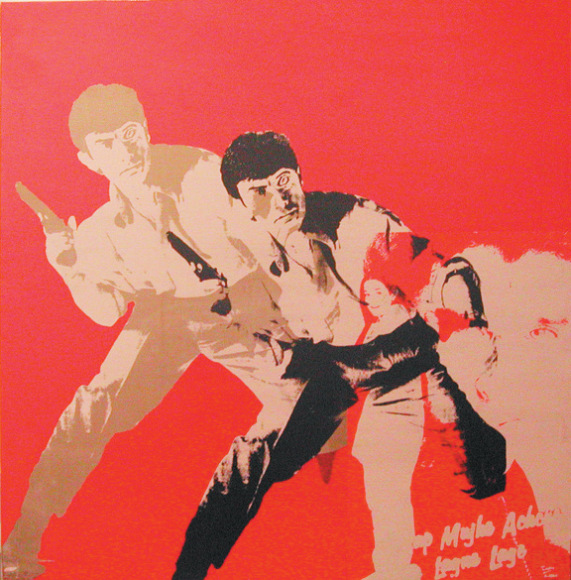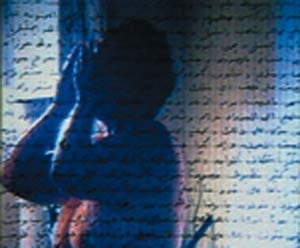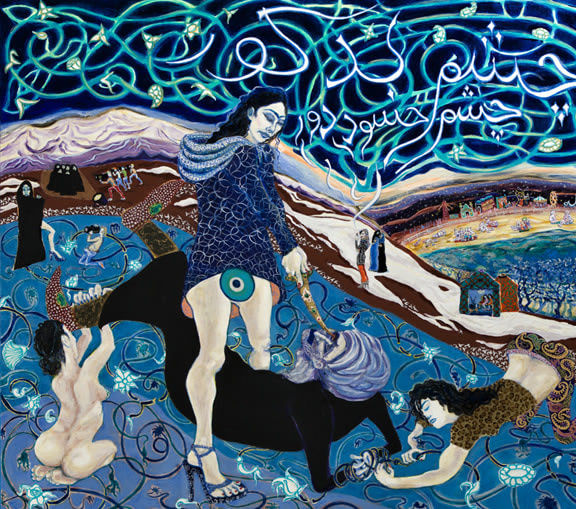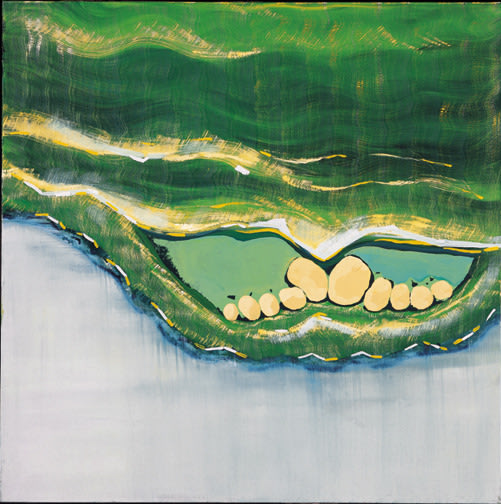Fire Walkers: Contemporary Artists from India, Pakistan and the Middle East
Thursday, May 1st – Saturday, June 7, 2008
Jaishri Abichandani, Negar Ahkami, Lalla Essaydi, Chitra Ganesh, Sheela Gowda, Mona Hatoum, Mala Iqbal, Reena Saini Kallat, Rajul Mehta, Prema Murthy, Yamini Nayar, Sa'dia Rehman, Hema Upadhyay
Stux Gallery is pleased to present Fire Walkers: A Selection of Works by Contemporary Artists from India, Pakistan and the Middle East. Organized in collaboration with the South Asian Women's Creative Collective (SAWCC) and curated by the Stux Gallery, the exhibition showcases a broad selection of well-established and emerging female figures of the Contemporary Indian and South Asian art scene while considering the influence Diaspora, in its various incarnations, has upon the practices of artists working on an international plane.
The practice of fire walking, long considered a test-of-faith with ritualistic and otherworldly implications, is in practice simply the meeting of two bodies, at two independent temperatures, which will both be altered due to their physical connection. Diaspora, a term once inextricably linked with exile, loss and forced dislocation is merely fire walking in a cultural arena, though, in both cases it is the first step which is most painful.
Each artist represented in the exhibition reveals through their individual work a strength and an unfaltering direction which allows them to broach issues of such overarching complexity and infinite delicacy that we felt no better term than Firewalkers would be an appropriate metaphor for their collective practices.
On the Artists:
Jaishri Abichandani’s (b.1969, Bombay, India, Lives: New York City) work has long explored the nature of unions between geographically and culturally disparate locals, most notably in her series Reconciliations presented at the Queen’s Museum of Art in 2008. This impetuous in her work has been linked to her own move from India to New York at the age of 14, however, her examination of disharmonious and harmonious couplings spans an even broader sphere of points including: public/private, physical/ideological, tangible/intangible and desire/reality. In this showing, Abichandani indulges viewers in a selection of uproariously irreverent, at times overtly kitsch, sculptures and paintings that dissolve our preconceptions into a pure realm of possibility.
Negar Ahkami (b.1971, Baltimore, MD, Lives: New York City) states of her own work: “The negotiation of cultures in my work reflects the first-generation American experience. The Persian-Islamic art influences I inherited include color, pattern, detail, ceramic textures, stylized representation, and symbolism.” Born in the U.S. and of Iranian heritage, Ahkami’s work looks directly at the preconceptions and realities of oppression through her own gaze, that of a fusion between East and West. In the paintings included, Ahkami exercises the stigma and localization of this term “oppression” by her co-option of classical stylistic maneuvers, refitted here for the 21st century.
Lalla Essaydi (b. 1956, Morocco, Lives: Saudi Arabia & Boston) looks to the distinctive period of the 19th-Century Orientalist Painting and cracks this stylized and solidly fictional realm with the insertion of contemporary man and relevant questions of gender and sexuality all through the lens of her own international eye.
Chitra Ganesh (b.1975, Brookyln, NY, Lives: New York City) will present a temporally-ephemeral, prodigious, wall- installation in which her self-developed visual vocabulary overwhelms the space with references to India, queerness and camp wile unsettling viewers with her uncanny ability to rest in the awkward spaces ‘between’. Having practiced in a wide variety of media including digital collage, photography and painting, Ganesh’s installation, which spills off the walls into the gallery space, enacts the artist’s principle of multiplicity as a spirit which draws together, not breaks apart, a permeating authorial presence.
Originally presented at the 9th Lyon Biennale, Sheela Gowda (b.1957, Bhadravati, India, Lives: India) reconfigures, and thereby reconsiders Ground Shift. A series of thirty-three, small-scale photographs of discarded grinding stones in India, pictorially track a changing way of life. Having worked previously with such media as cow dung, kumkum, and charred wood, Gowda’s work frequently possesses carnal, sensual overtones due to the corporeal realities her practice aims at. Daily life and ritual, here, become human again.
Noted performance artist, Mona Hatoum (b.1952, Beirut, Lebanon, Lives: London) presents her seminal video piece, Measures of Distance (1988), which features the visual, the pictorial, the personal and the political, layered into a culminating and heart-breaking taste of the intimacies between a mother and daughter separated by ‘exile’. Letters between these two women, their only remaining physical contact, are deconstructed through the artists use of them visually and aurally. Sentences are stacked to create a barbed-wire effect between the performer, and us while in their translation, provided for our benefit, they lose their original pungency. Measures of Distance is a beautiful and gripping web of the ties that bind us all.
Mala Iqbal’s (b.1973, Bronx, NY, Lives: New York City) work explores the medium of painting with the aggressive and searching quality only a true painter can bring to such detailed and nuanced works. Melting the discrepancy between street-graffiti, the classical landscape and such popular styles as drip painting and spray painting, the final image causes our eye travel over the canvas voraciously, though unendingly, attempting to locate a point of departure.
Reena Saini Kallat’s (b.1973, New Delhi, India, Lives: Mumbai, India) Synonym is as much painting as it is sculpture. Composed of interlocking, rubber stamps in numerous color gradations, suspended between two pains of pressed glass to create photorealistic portraits, Kallat’s work’s references to Chuck Close and Pointillism are as present as her questioning of the fragmentation of the individual in contemporary society. Stripped of any referent, the simple act of isolation effects particularity, while simultaneously giving us the ‘every-man’ who is ultimately no one at all.
From Bollywood to Hollywood Rajul Mehta’s (b.1970, Bombay, India, Lives: Israel) Warholian compartmentalization of pop icons and commercial ephemera uses the contextualization each of her targets rely upon, for it’s unique, if shifting, identity to reduce them to flat two-dimensionality. Mehta strips each subject of its public shelter and reinvigorates them as new, fresh vessels, ready and able to receive the viewer’s desires fully.
Prema Murthy’s (b.1969, Seattle, WA, Lives: New York City) begins each piece by gathering numerical data on a diverse range of topics such as immigration patterns, effects of global warming and consumer spending which is then digitally mapped using 3D modeling software to de-form, disintegrate and re-integrate these fluctuating values. Murhy’s digital prints and corresponding video works take on the complex and endlessly mutable world of technology, thus concretizing a sphere which is as frequently applauded for, as refuted for, its anarchistic functioning.
Yamini Nayar’s (b. 1975, Rochester, NY, Lives: New York City) hand-made, entirely constructed miniature sets of private interiors are composed with sly neglect for perspective and proportion. The resulting photographs of said sculptures cause a tension between these two unified mediums and highlight the expressive abilities and limitations of each respectively. While devoid of actual figures, Nayar's works speak to a highly personalized appreciation of physical surroundings, wherein an object's hope for meaning is lengthened and hyphenated by its placement.
Sa’dia Rehman’s (b. 1980, Queens, NY, Lives: New York City) mock-pedophilic mixed-media installation and wry works on paper use humor to analyze such complex realities as arranged marriage, cultural assimilation and division of gender roles with the perspective of a lonely child. Vulnerability and impressionability permeate Rehman’s lone figures as they float near the viewer in empty realms, sorting through the baggage of childhood.
Hema Upadhyay’s (b. 1972, Baroda, India, Lives: Mumbai, India) Derelict’s, a large sculptural piece made of matchsticks seemingly on the verge of destruction, reveals a physical anxiety that is met by two photographic documentations of site-specific works, BYE and This Space Between You and Me. The delicacy and temporality of all three pieces, the artist links to the nature of migration, to finality and to vanishing. The grass seeds of BYE fly away as readily as the pigeons in This Space... and, perhaps, there is no better metaphor for loss and the destructive side of human nature than a match, so easily used and discarded after the initial flame.

